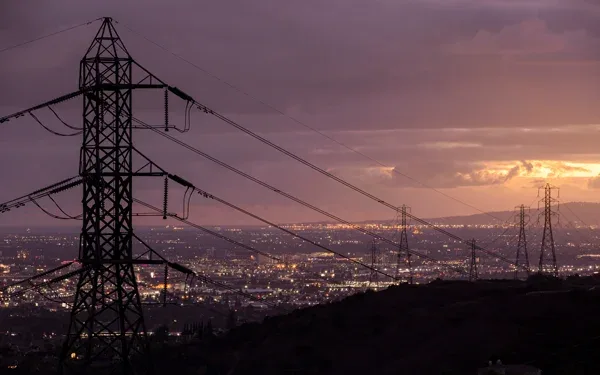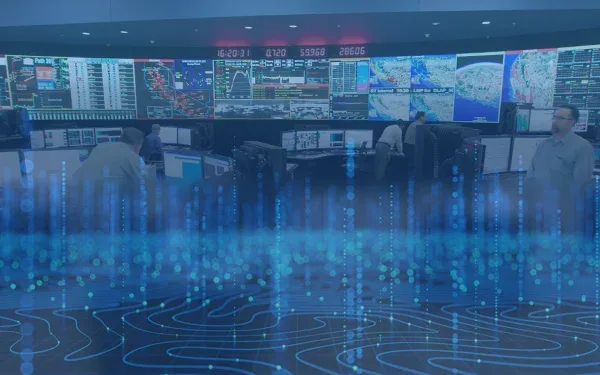Background on new grid emergency notifications

Seamless and clear communications are never more important than during an emergency and the California Independent System Operator (ISO) has updated its emergency notification system to more effectively communicate with industry partners when power supplies are strained.
The Energy Emergency Alert (EEA) system being used by the ISO as of May 1, 2022 was established by the North American Electric Reliability Corporation (NERC) in 2007 as a Reliability Coordinator procedure for communicating and coordinating during Capacity and Energy Emergencies.
The intent of those standards has been to ensure that all Reliability Coordinators clearly understand potential and actual energy emergencies in the Interconnection and can help Balancing Authorities and Load Serving Entities obtain capacity and energy when they have exhausted all other options and are unable to provide their customers’ expected energy requirements.
When the NERC standard was implemented, however, the ISO had been using its own Alert Warning Emergency (AWE) standards since 1998 to communicate emergency conditions and coordinate voluntary and mandatory load-interruption programs.
For many years, in fact, all the way from 2008 to 2019, the ISO did not issue any Stage 1, 2, or 3 emergency declarations. However it was often noted that when an AWE notification was issued, extra discussion time was required with the Reliability Coordinator and neighboring Balancing Authorities to describe the conditions the ISO was experiencing and actions being initiated.
If you are interested in how often the ISO used its AWE system, you can see the ISO’s AWE Grid History Report here.
There was also some concern that the extra effort to determine the corresponding EEA level was frustrating for Real-Time Operators. For example, when the ISO Real-Time Operators issued a Warning notice, depending upon system conditions and actions being taken, it could translate to either an EEA 1 or an EEA 2.
If the ISO considered its Warning notice to be equivalent to an EEA 1, but the Reliability Coordinator translated the event conditions to an EEA 2, this would prompt neighboring Balancing Authorities to start offering emergency assistance energy. But according to ISO procedures, it could be premature to start accepting emergency assistance energy when we were still in the early part of the Warning which equated to EEA 1 conditions and actions.
Our Operations team discussed the issue on a number of occasions over the years, but it was more or less kept on the backburner due to other more urgent initiatives and the relative infrequency of emergency events.
Then came the extreme heat wave and strained grid conditions of mid-August 2020. The ISO issued Warning, Stage 2 and 3 notifications to coordinate actions. For context, Stage 2 had last been issued by the ISO in 2006, Stage 3 in 2001. And when we reviewed what happened that August, it was noted that extra discussion time was required with the Reliability Coordinator to determine if the corresponding EEA level was 1, 2 or 3. Extra time was also required to describe the conditions to neighboring Balancing Authorities to clarify what type of assistance the ISO needed. To cite just one of several similar examples, in 2021 we experienced what I call procedure confusion when one of the larger utilities notified its customers about the potential for rotating outages based on an ISO warning but when we were not in fact forecasting any supply shortages.
Time is precious in grid emergencies and we determined that there was an opportunity to streamline the process and reduce how long it took to translate emergency stages to the corresponding EEAs. Improving communication protocols to adequately forewarn the severity of extreme events to initiate coordination was included in the recommendations in the Final Root Cause Analysis of the August 2020 event that we prepared with the California Public Utilities Commission and the California Energy Commission.
Soon after that analysis was published, we began exploring the idea of moving away from the AWE notifications to the NERC-recognized EEAs. Steps were taken to start raising awareness in preparation for summer 2021 that the ISO would adopt the EEA standards by this summer. Among other things, AWE message templates, Operating Procedures and training were updated to include corresponding EEA levels.
The NERC standards now being used by the ISO established three levels of Energy Emergency Alerts. The Reliability Coordinators started using these terms in 2007 when explaining energy emergencies to each other, and over the years, many Balancing Authorities started to adapt their emergency terminology to match.
Last fall, in preparation for summer 2022 and our switch, the ISO began engaging with the state’s Investor Owned Utilities to make sure we were all on the same page and using the same vocabulary and protocols. Our new procedures are posted on the public website:
The changes have also been discussed during pre-summer meetings and were included in a public training session April 20. The related presentation and video are posted on our website in the Learning Center. The meetings and training sessions are focused on ensuring that California ISO’s customers are prepared to respond to emergency operating conditions and we believe this switch to the NERC standards will be a big help.


